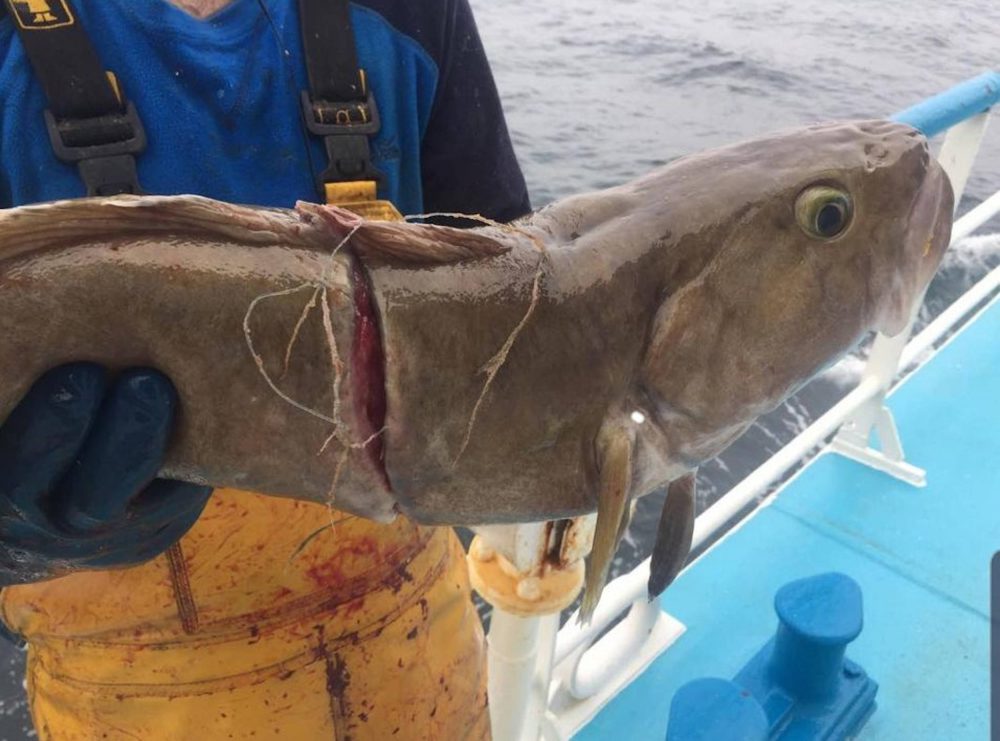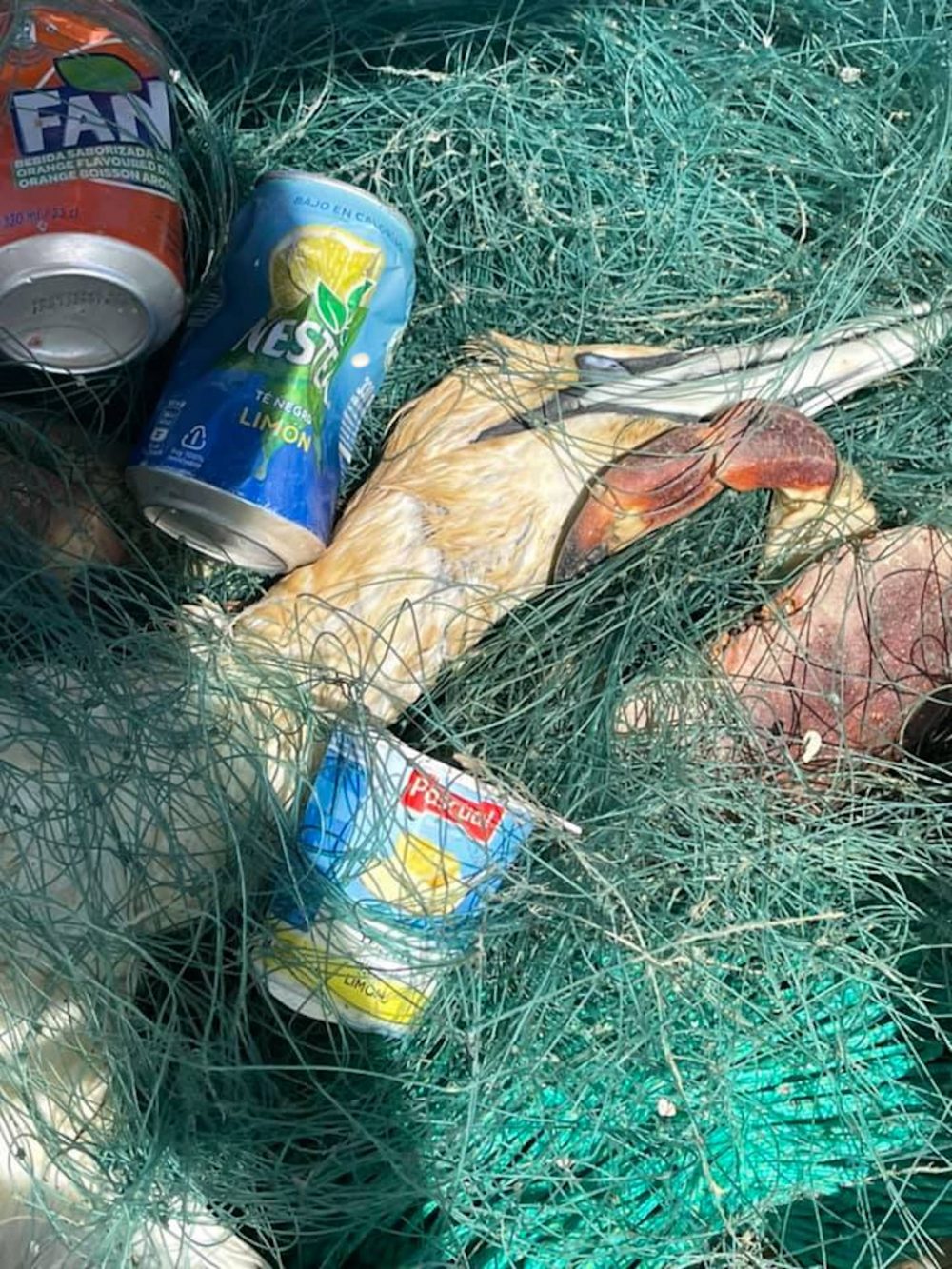A SCOTS fisherman has hit out at Spanish fishing crews after claiming to continuously find their abandoned nets and litter in Scottish waters.
Fisherman of 15 years, Ross Robertson has shared several distressing images showcasing the deadly nature of abandoned gill nets, which Scottish fishers are prohibited from using.
Ross, from Burra, Shetland, believes the discarded equipment has been left by European flagships, who are not restricted by the use of the nets.

The 30-year-old suspects that Spanish fishers are to blame for the dangerous dumpings after finding Spanish labelling on much of the litter attached to nets.
Although Ross has been distressed by seeing birds that have been killed as a result of littering, he and his crew have sadly become used to the heartbreaking sights.
One shocking image shows a seal in distress with a dark green fishing net trapped around its neck.
The net is frightfully tight around the seal’s neck and there is a visible imprint where it squeezes the seal’s short black and grey fur.
Another image shows a large cluster of dense fishing nets which Ross’s crew has caught.
A blue rusted tin of tuna could also be seen with Spanish labelling across its side.
Amongst other litter, there is also a yellow wrapper which is covered from top to bottom in Spanish writing.
One heartbreaking image shows a large brown fish, whose body has been sliced open by discarded fishing line.

Another image shows how the entire neck of a gannet has become completely interwound and trapped in fishing netting.
The masses of dark green thin fishing wire is clumped together and is entirely tangled in itself, making it look near impossible to separate.
The sea bird’s white beak has been forced out so that it is straight in line with its now stained brown neck.
Speaking today Ross said: “It seems to be getting worse year on year the quantity of flagships coming here.
“Our method of fishing is trawling, so we tow a net around the sea bed to catch our fish.
“We drag up all sorts of rubbish but it’s mostly Spanish long lines, gill nets and general day to day rubbish which proves they don’t dispose of their rubbish onshore.
“Many days I sit and watch them land into their trucks in Lerwick and not once have I seen black bags or rubbish come ashore.

“Our beaches around Shetland are covered in nets, lines and general Spanish branded food wrapping litter.
“These boats fish our waters unmonitored by the fisheries protection vessels, unlike the local fleet who get boarded on a daily basis.
“Seeing the dead birds really distresses me, but we are all so used to it now.
“We see it every single day, if the birds are not tangled up and already dead they are struggling to fly or feed.
“It’s a very common sight to see birds flying around with a few metres of the monofilament line hanging from their beaks.
“In an ideal world I would like to see that type of fishing banned from our waters completely.”
Gillnets are renowned for their lethal impact on seabirds by bycatch, so much so that it is estimated that 400,000 birds are killed by the fishing nets every year.
The use of gillnets has been prohibited in Scottish waters since 1996 when The Inshore Fishing Order was passed.
The Shetland Fishermen’s Association had hoped that the issue would be resolved when Britain left the European Union.

